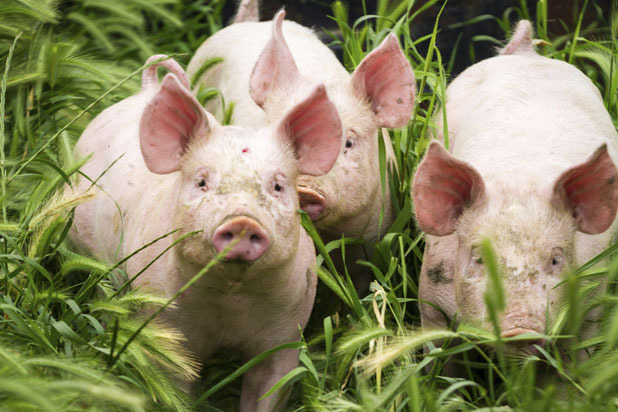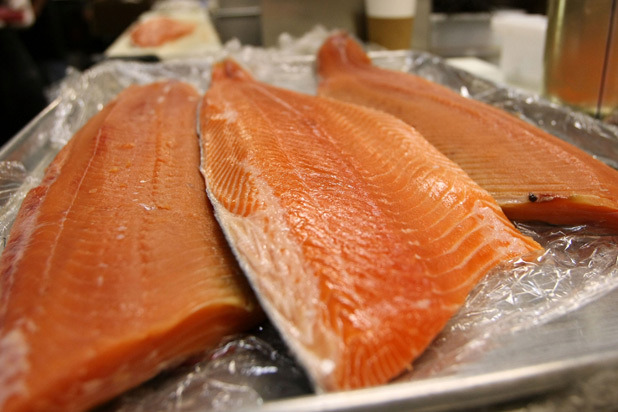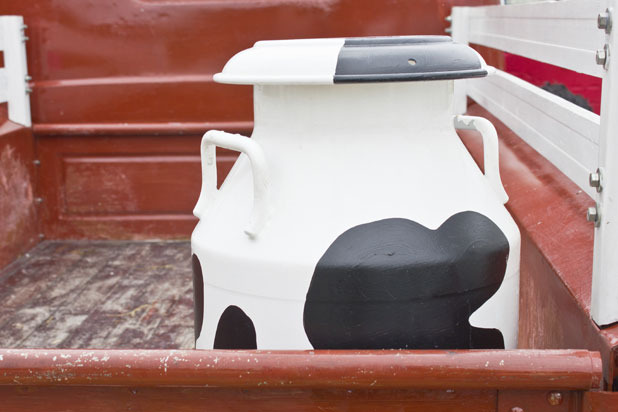6 American Meat Products That Are Banned Abroad (Slideshow)
Much of the U.S. beef cattle are fed synthetic hormones in the feedlots prior to slaughter. The chemicals are essentially growth hormones meant to increase the net amount of meat produced from each cow, but numerous concerns have been raised (by the National Cancer Association, no less) about the high incidence of hormonal cancers produced as well. As early as 1989, the EEC (European Economic Community) put its collective foot down and said that's not okay, and banned the treated beef from being sold in any E.U. country, though some of those restrictions have since relaxed depending on the hormones used. There have also been other issues like mad cow disease, leading to China also banning American beef products. Ironically, the U.S. has banned much of the Europe's beef products, too, because of mad cow disease.
Pigs, Cows, and Turkeys Fed Ractopamine
Another growth hormone commonly used in the U.S. to bulk up the meat product yield is ractopamine, which has been banned in the European Union, China, and Taiwan. In the U.S., it's commonly used in the feedstock for pigs, cows, and turkeys (there's a reason some of them are so big after all). The European Food Safety Authority and the Center for Food Safety have slammed the U.S. for its continued use of ractopamine saying it can cause anxiety and an increased heart rate in humans. As noted by the FDA, it can also increases injury and lameness in pigs. The U.S.'s position is that the use of ractopamine favors agricultural trade over the health risks.
Farmed Salmon
As overfishing of our oceans is a serious environmental concern, the U.S. errs in favor of farmed salmon for mass consumption. However, like many other American meat products, farmed salmon is raised on a concoction of grain, antibiotics, and other drugs rendering it not at all as wholesome as we may think it is. Factory-farmed fish are intensively confined and are fed a steady diet of antibiotics and other drugs to combat the unnatural and squalid conditions of the pens. This often results in gray-colored flesh, which is then counteracted by dosing the fish with synthetic astaxanthin made from petrochemicals — which is banned in Australia and New Zealand.
Arsenic-laced Chicken Meat
Last year the FDA finally admitted that American chicken meat contained cancer-causing arsenic. Despite the fact that arsenic is a well-known toxin and carcinogen it's often added to chicken feed in the U.S. to help promote growth and kill parasites. In 1999, serious health concerns prompted the European Union to ban arsenic-based feed additives. Even some states, like Maryland, have pushed back on using arsenic in the feedstock — but, by and large, it's still widely used.
Chicken Washed With Chlorine
Generally speaking, American-raised chickens are bred in incredibly cramped conditions. Thousands of birds are literally stuffed inside massive warehouses and spend their lives standing, sleeping, and eating in their own waste. It makes sense then, that the meat picks up a lot of pathogens. After the chickens are slaughtered, they're washed in chlorine to rid them of some of nastiest germs. The European Union is not having it. Convinced the process is dangerous to humans because the chlorine likely lingers in the meat, they've banned these chemical baths across the E.U. They've also banned the chlorine-bathed chicken from the U.S., to boot.
Milk From Cows Given rBGH
Some of the mercurial concoctions of growth hormones that are routinely pumped into U.S. meat products are not just constrained to the meat alone. rBGH (recombinant bovine growth hormone), for example, is commonly fed to cows to dramatically increase milk production. While legal in the U.S. since being approved by the FDA in 1993, rBGH is not permitted in Australia, New Zealand, Canada, Japan, and the entire European Union due to human health concerns.





